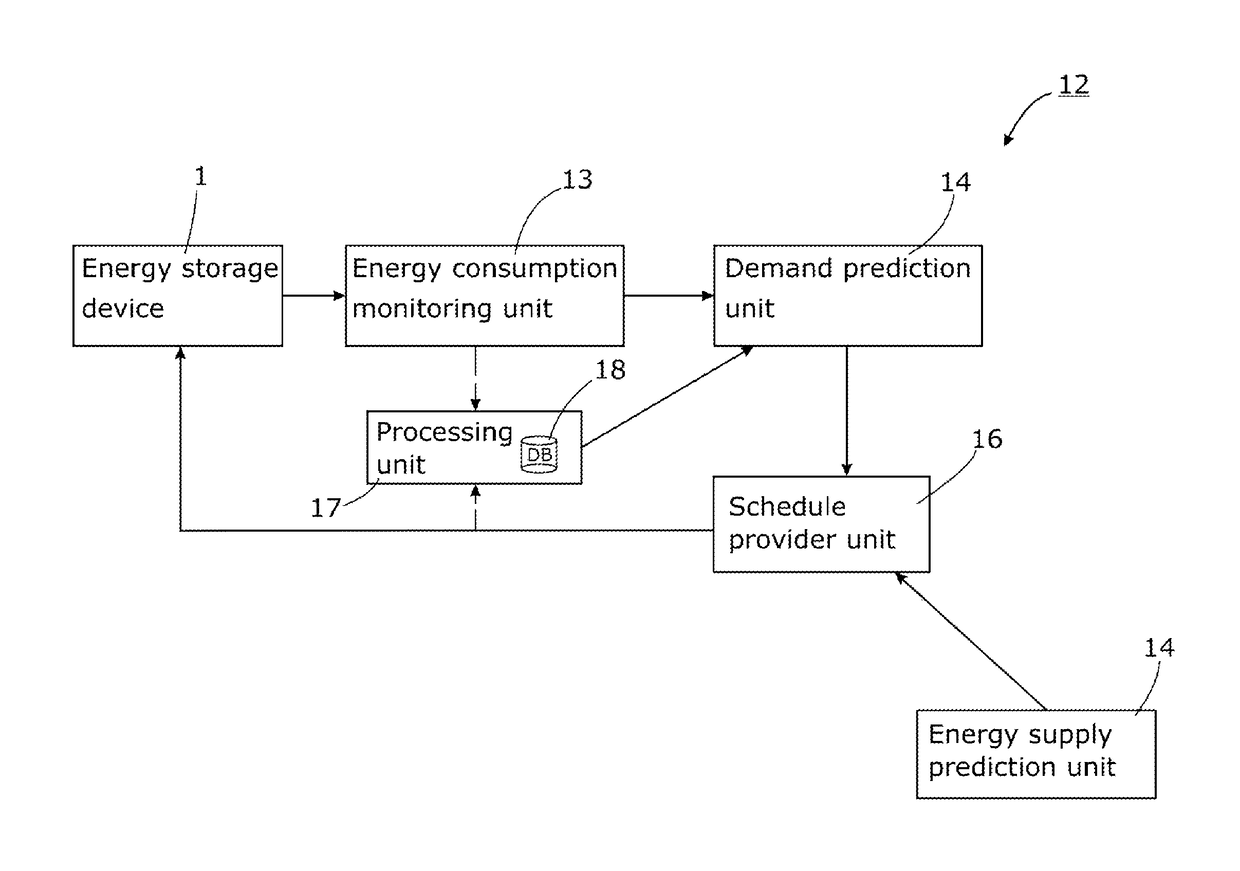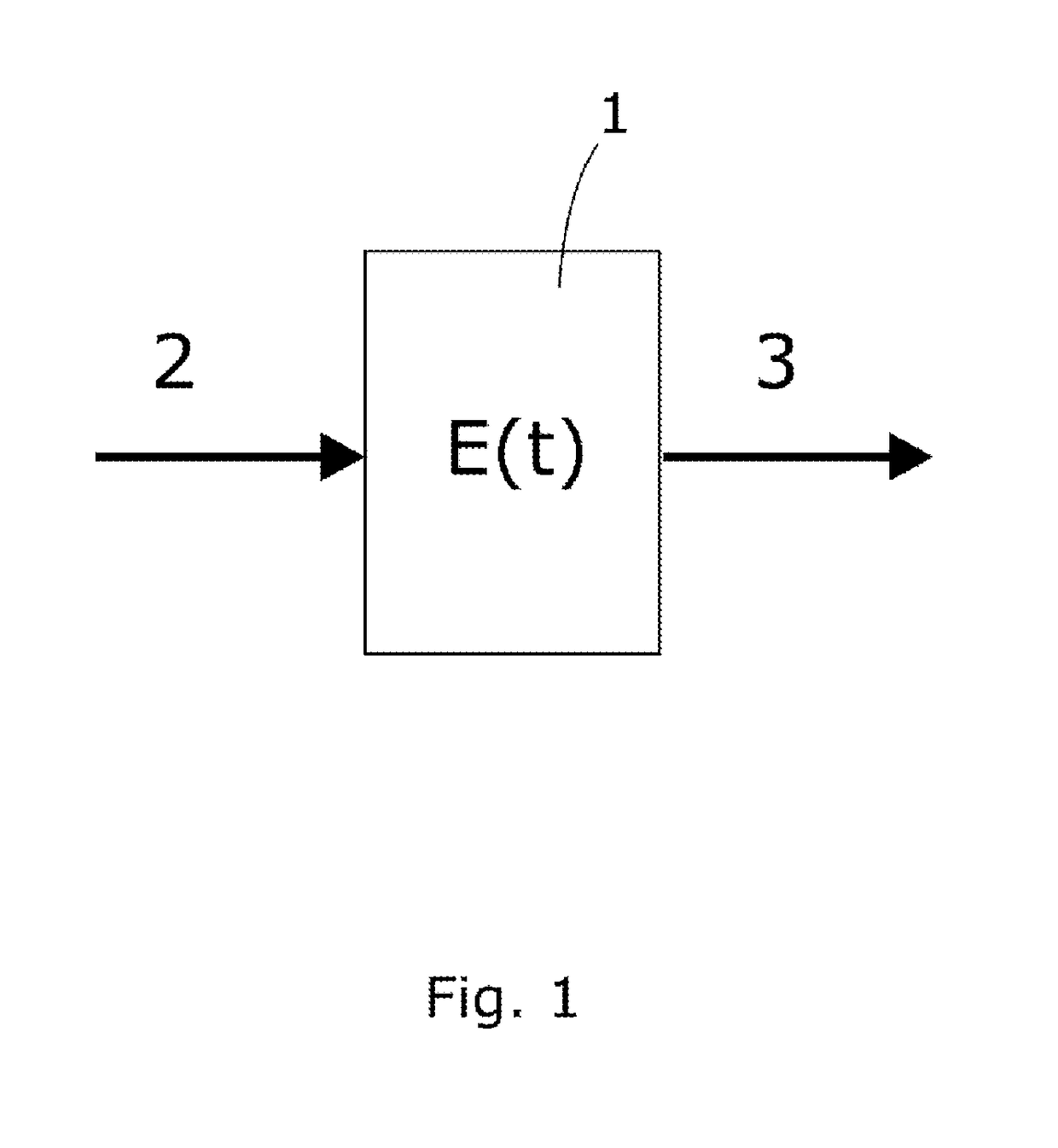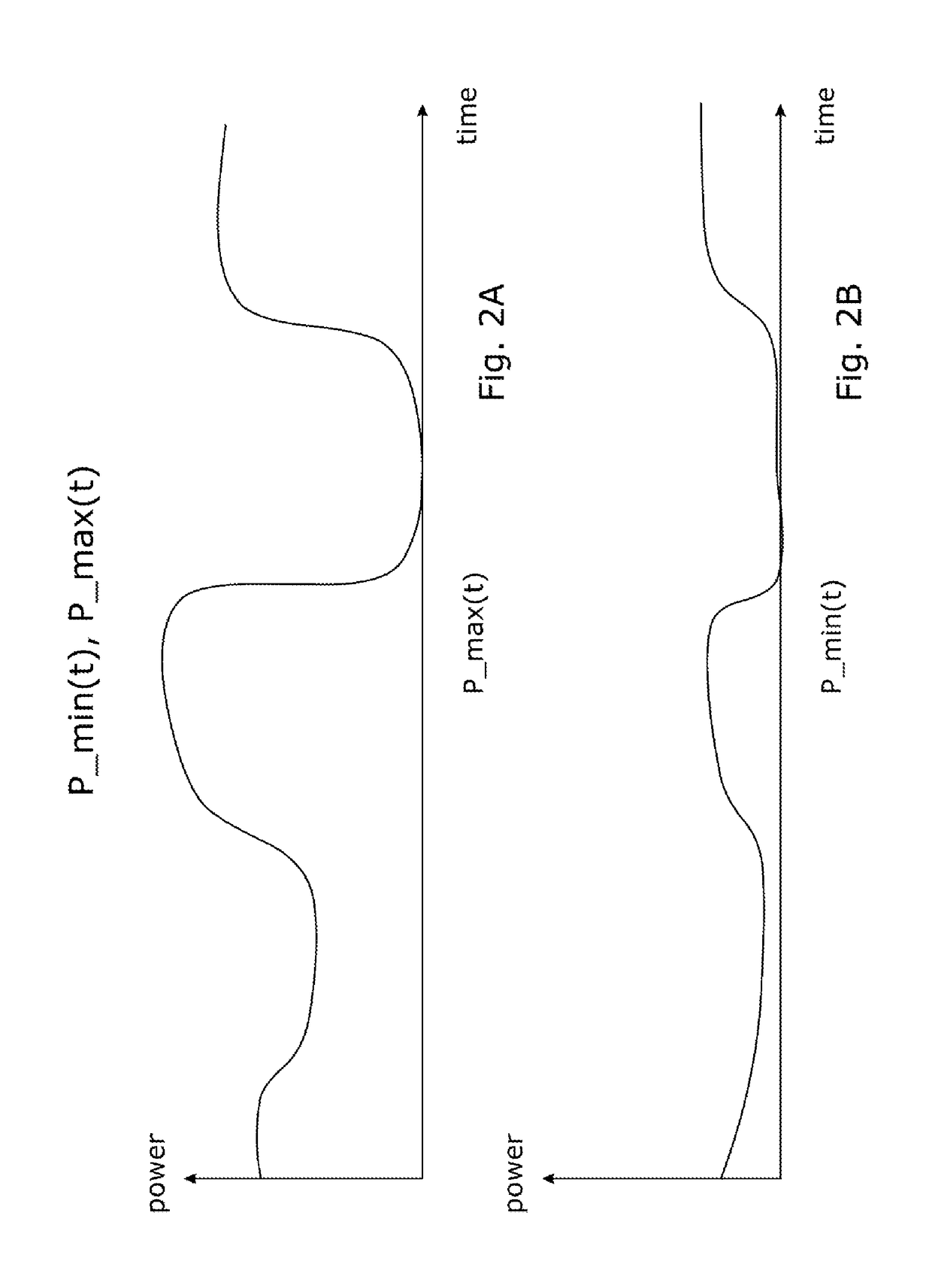Energy allocation system for balancing energy consumption
a technology of energy allocation and energy consumption, applied in adaptive control, process and machine control, instruments, etc., can solve the problems of limiting the availability of natural energy resources, fossil fuels in particular, affecting the environment, and unable to be replaced and/or detrimentally impacted by the environment,
- Summary
- Abstract
- Description
- Claims
- Application Information
AI Technical Summary
Benefits of technology
Problems solved by technology
Method used
Image
Examples
Embodiment Construction
[0023]It is desirable to be able to address the energy goals of demand units, that is, providing power to the demand unit over a given time-period thereby to facilitate a desired operation, and to do so while taking advantage of the inherent, albeit limited, flexibility of energy storage devices. Particularly, it is a challenge to facilitate that the energy consumption by a relatively large number of energy storage devices follows the supply / generation of energy by an energy provider. Within the description, the same reference numbers or signs are used to denote the same parts or the like.
[0024]Reference is now made to FIG. 1, which schematically illustrates the principle of a device model in an embodiment of the present invention. The device is preferably an energy storage / buffering device 1 and may, for example, be the battery of an electric vehicle or a hot-water boiler. Generally, in an embodiment of the present invention, the energy storage device 1 may be a device capable of f...
PUM
 Login to View More
Login to View More Abstract
Description
Claims
Application Information
 Login to View More
Login to View More - R&D
- Intellectual Property
- Life Sciences
- Materials
- Tech Scout
- Unparalleled Data Quality
- Higher Quality Content
- 60% Fewer Hallucinations
Browse by: Latest US Patents, China's latest patents, Technical Efficacy Thesaurus, Application Domain, Technology Topic, Popular Technical Reports.
© 2025 PatSnap. All rights reserved.Legal|Privacy policy|Modern Slavery Act Transparency Statement|Sitemap|About US| Contact US: help@patsnap.com



